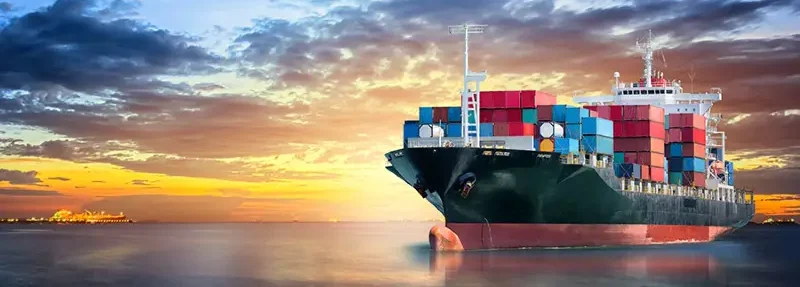Complying with PRC customs and trade law — Exporter Magazine

In March 2013, Zespri Management Consulting Corporation was found guilty by a Shanghai court of “smuggling” due to under-declaration of the dutiable value of kiwifruit. Sanctions imposed included an assessment of underpaid duties, financial penalty, confiscation of “illegal gains” and imprisonment for the relevant persons involved. Damon Paling shares some of the lessons learned so other Kiwi exporters may do business in China with greater insight.Phased tariff reductions have been taking place since the China-New Zealand FTA was signed in 2008. For example, certain fresh fruit can enjoy a lower preferential customs duty. The customs duty rates assessed on kiwifruit imported into China in 2008, 2012, 2013 were 17.8, 11.1 and 8.9 percent respectively. From 2016, the customs duty rate for kiwifruit will be zero percent.The Importer in China should be aware of the changing customs duty rate. At the same time, a Certificate of Origin should be obtained from the designated New Zealand issuing authority. This should be submitted to China Customs upon importation in order to enjoy the lower preferential duty treatment.New Zealand product will still be subject to 17 percent or 13 percent Value Added Tax (VAT) at the Chinese border. The importer in China should have obtained general VAT tax payer status, in which case this import VAT can be offset against output VAT, meaning that it is not a cost on the profit and loss account.
Understanding PRC Customs and Trade Law
China, like New Zealand, is a member of the World Trade Organisation (WTO) and World Customs Organisation (WCO). Hence, similar to New Zealand, China adopts the Harmonised System (HS) for determining the tariff classification of goods, which is used to define both customs duty rates and non-tariff measures. China also follows the WTO Valuation Agreement (GATT, Article VII) and assesses duties based on the cost, insurance and freight (CIF) value.The Dutiable Value equals the Transaction Price (FOB price) plus International Freight plus Insurance plus other relevant overseas costs. The Transaction Price is generally represented by the amount set out in the commercial invoice from the New Zealand exporter to the Chinese importer. If the INCOTERMS are FOB then the Chinese distributor should make appropriate adjustments to include an amount for international freight and insurance into the dutiable value.As required by the Customs Law of PRC, accurate import declarations shall be made to Customs by the importer. Any failure or violation of the regulation on Customs supervision shall be punished by Customs. In the Zespri case the exposure accrued to several million New Zealand dollars and resulted in imprisonment for the persons responsible.A Chinese distributor that is exclusive and maintains a near monopoly means that China Customs are working with comparatively less data. However, through a mutual cooperation agreement China Customs can work with the New Zealand Customs Service to gather additional information.
Defining the business model
A typical baseline business model is depicted in Figure 1 below. This scenario depicts a routine New Zealand exporter selling and shipping FOB directly to a Chinese distributor. The Transaction Price and therefore correct dutiable value to be declared to China Customs for the goods is $100.
Variations from the baseline business model
Falsification of importation documentation can happen but with certain considerations for items such as the foreign exchange laws and other factors that still prevail in China. At the end of the day the New Zealand exporter still needs to be paid in full.The scenario in Figure 2 depicts use of commercial and personal bank accounts by the Chinese distributor in order to complete correct remittance to the exporter in New Zealand. In this example only $80 is declared to China Customs as the dutiable value but the New Zealand exporter still receives $100 as per the agreed Transaction Price.The scenario in Figure 3 depicts use of an affiliated Hong Kong middle man as introduced by the Chinese distributor. Similarly, in this example only $80 is declared to China Customs as the dutiable value but the New Zealand exporter still receives $100 as per the agreed Transaction Price.Market pricing penetration strategies and other planning can be considered in order to legitimately lower the dutiable value and therefore the duties payable. Institutions such as the World Customs Organisation (WCO) in Brussels have over the years opined extensively in this area. The extent to which this is acceptable in China varies case-by-case. As a risk management strategy advance rulings can be obtained by the Chinese distributor from China Customs in certain situations.Often what triggers questions from China Customs is a Chinese employee that turns ‘whistle-blower’ due to grievances against his/her employer. A criminal investigation case is then initiated by the Anti-smuggling Bureau. The Chinese employee may be immune from prosecution even though he/she was directly implicated in a duty evasion scheme.
Using import/export agents
The use of third-party import/export agents (I/E agents) can still feature in the supply chain for New Zealand exporters. The reason being the major exports from New Zealand to China such as diary, raw wood, wool, seafood, and meat all require some form of import license or inspection from either MOFCOM or the local Commodity Inspection and Quarantine (CIQ). Knowledge of these requirements and procedures – and relationships with the in-charge authority – is paramount. An I/E agent that can help to navigate this aspect of the supply chain can be of significant commercial value.In this regard, a typical service agreement should be bilingual and include completion of the customs declaration, Customs/CIQ clearance, and payment of foreign exchange. The Chinese distributor should provide data that the I/E agent requires in order to complete the import declaration to Customs. The goods should be delivered to a named point at the Chinese border by the New Zealand exporter.After obtaining the notice of the remittance of foreign exchange and full payment for the goods in RMB, the I/E agent will make the remittance to the New Zealand exporter on behalf of the Chinese distributor. If payment in advance is required by the New Zealand exporter then the I/E agent may be able to remit foreign exchange up to three months in advance of the goods arriving in China. Also, under the foreign exchange reform that is taking place the Chinese distributor may be able to remit payment directly to the New Zealand exporter without going via the I/E agent.The sales contract for the goods between the New Zealand exporter and Chinese distributor may have to be provided to the I/E agent in advance of concluding the I/E Agent Service Agreement (the I/E agent cannot revise the sales contract). The I/E agent will charge a service fee to the Chinese distributor which is normally expressed as a percentage of the total amount of the goods’ value.Expenses incurred when importing/exporting, including customs duty/VAT, inspection fees and licence fees will be borne by the China distributor. If the distributor acts as the consignee it should request its name to be stated on the import VAT memo so that so that it can be used for claiming input tax credit against output VAT. The I/E agent should provide original copies of the Customs Duty and VAT memo to the Chinese distributor.A Chinese subsidiary of the New Zealand parent may apply for I/E Rights and act as the IOR. However, they can still engage an I/E agent to conduct I/E activities on behalf of them (for all or only selected I/E goods). If an I/E agent is engaged and a Service Agreement is in place, the I/E agent will be treated as the IOR.
Managing relationships
Notwithstanding the regulatory reform which has taken place in China over the past ten years or so, it is common for Customs and CIQ to routinely question importers. China Customs are revenue focused and CIQ is increasing its commodity inspection rates and enforcement of product quality standards. China Customs often seek to increase the dutiable value and change the declared HS Code. Ensuring consistency in all export/import documentation, selection of appropriate INCOTERMS, nomination of a preferred place of delivery, partnering with ‘grade A’ customs brokers and related service providers in China are all fundamental. For example, it is important to ensure consistency in the HS Code, goods description, goods value, and unit of measure as stated on the Certificate of Origin, invoice and packing list.However, there is still no substitute to being on-the-ground and working proactively with the authorities to ensure business success. Most companies still elect to resolve issues by directly meeting with the authorities and negotiating a resolution. Local partners will likely take primary responsibility for managing relationships day to day.
Damon Paling is a customs and international trade partner with PricewaterhouseCoopers in Shanghai (damon.ross.paling@cn.pwc.com). He has spent the past nine years based in Shanghai, is a member of the AMCHAM Trade Facilitation Task Force and co-authored the Kluwer Law publication “A Quick Reference to The Trade and Customs Law of China”.
Key Lessons
• New Zealand exporters should know what customs duties their products are subject to in China and therefore the financial incentive for a Chinese distributor to make an under-declaration or some other form of inaccurate declaration in order to derive a financial gain. Tariff rate information is available online from various sources. Clearly, the sooner the FTA delivers a zero percent duty rate for a wider range of New Zealand products the better as the financial opportunity to evade customs duty reduces.• Given the similarities in customs law, a proposed business arrangement that would be unacceptable to the New Zealand Customs Service is more likely than not also going to be unacceptable to China Customs.• Define and agree the baseline business model in advance and document this in the form of a Sales Distribution Agreement. Strongly question the commercial reasons behind any requests by the Chinese distributor for deviating away from this model.• Use of an I/E agent is a legitimate business model and may in fact be essential to clearing Customs/CIQ depending on the nature of the goods. Control over the I/E agent can be retained through implementing suitable procedures and protocols on-the-ground in China.
• New Zealand exporters can help the Chinese distributor by ensuring that complete and accurate documentation is prepared. Whilst significant changes in PRC customs and trade law have taken place over the past ten years or so, investing in relationships with Customs and CIQ at a port level remain essential elements to ensuring long-term business success.
Publishing Information
Magazine Issue
Exporter Magazine May/June 2013 issue 28







